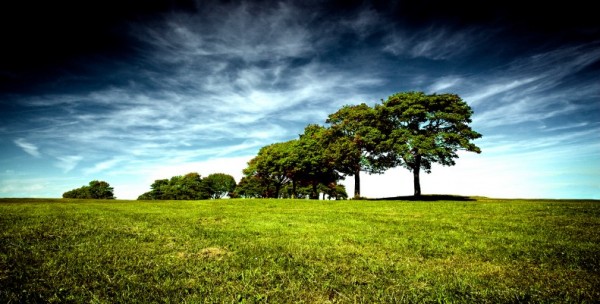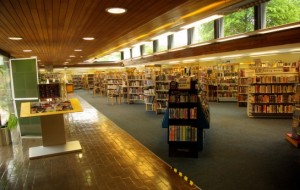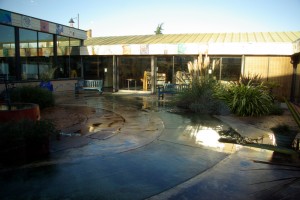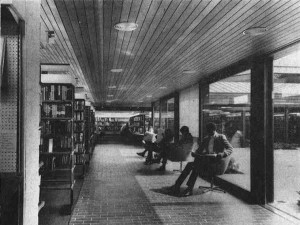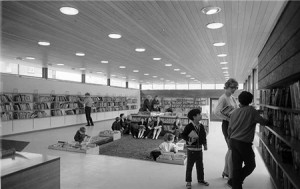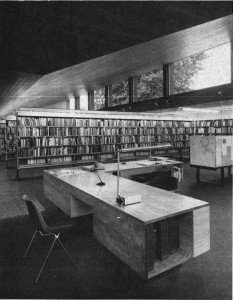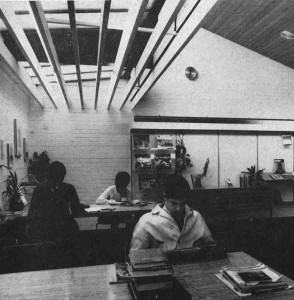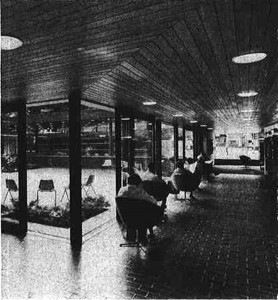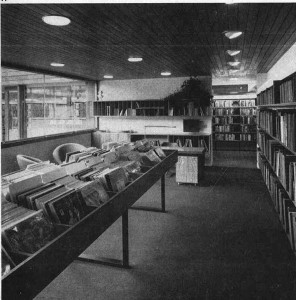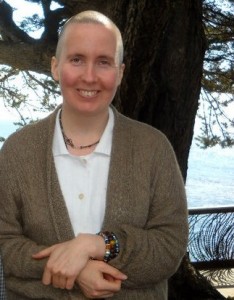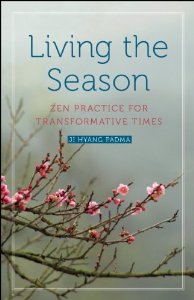The New Quiet
Wednesday, November 13th, 2013
Sitting in my local library this morning I tweeted a quote that came to me as I flittered between working on a writing project and checking my email, “All libraries have potential to be sacred spaces when they harness and allow space, both physical and mental to be silent.” I was caught in a moment of mindfulness as I appreciated the quiet space I was sat in that was allowing me to create.
I feel strongly about protecting silent spaces in libraries, as more and more libraries become community spaces that are noise factories rather than spaces where people can sit back and allow their imaginations to unfold.
Thinking about posting the above quote I decided to google and find images of the library in South London I grew up with to add to the quote so I could post it on my blog. West Norwood library (the library I grew up with) was an iconic library building designed by Ted Hollamby and engineer /architect Edmund Happold and was opened by Princess Margaret in 1969 in the South London suburb of West Norwood.
It was a striking building decked with natural wood and plain white walls primarily influenced by architect Edmund Happold who started his career with Finnish architect Alvar Aalto and Ted Hollamby who was sympathetic to the work and styles of William Morris.
Here are some photo’s I discovered on the Internet showing what the library looked like in its prime.
It had a central courtyard around which the library was built. It was adorned with dark brown, polished; slate marble tiles and was completely wheel chair accessible. Its foyer had glass-fronted wall to ceiling cabinets with brilliant lighting that held displays and other exhibitions over the years. One year near when the library had just opened I entered a poem and won second prize and had my poem proudly displayed there.
The children’s library at the front had a pit in the centre, completely child friendly with books built into walnut wood boxes surrounded with a deep ruby red shag pile carpet, which hugged you the minute your feet landed there.
By the time the library opened I was aged seven and jumped straight to the junior section where I recall my first sets of book were the Famous Five books by Enid Blyton. My primary school teacher would read us a chapter from different books in the series at the end of each school day.
No matter how robust and energetic we had been during the day reading time signaled time to get quiet, to settle down and to go inwards as we were captivated by the strong, rhythmic tones of Mrs. Hinds reading voice which would send half of the class to sleep as it was so relaxing and soothing.
The beaches and messy rambling home George (really Georgina), Julian and the rest of the gang hung out in the holidays came alive in my imagination. Here without any persuasion was my first love affair with books.
One Friday afternoon after leaving us on a cliffhanger I could not bear to wait the weekend for the next installment so I begged Mum to let me escape to the library and I raced the ten minutes as if my life depended on it so I could get a copy and read to what came next.
I recall describing the story to the librarian and the two of us flicking through the whole series of Famous Five books trying to find the right story my teacher had read. It was my first memory of real anxiety bittersweet as it was also that moment when books became my best friend and since then have always been.
Over the years I’ve had my fair share of disasters with in person friendships but books have always remained steadfast, reliable and loyal companions. I never feel alone as long as a book is to hand.
So it has been with great disappointment earlier this year when I discovered the library of my childhood had been closed (there are plans to reopen on the new site). In my heart it felt a brutal death and severance despite no longer living in the area. This not being enough months later I discover that this iconic building is being turned into a cinema complex thanks to the Picture House company but it’s death is also messy. It’s copper roof been stolen and squatters have moved and the inside of this stunning building now looks like this. My heart bleeds. At one point the building was taken over by squatters. This is the state they left it in.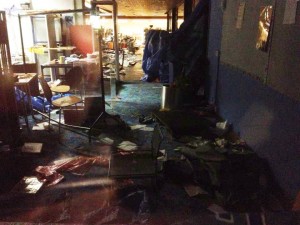
Is this really a way to treat a building that had a wall full of walnut cased cabinets with hand written index cards in fountain pen with references of the names and titles of every book the library ever stocked.
Is this the way to treat a library that fed the hungry souls and spirits of children, teenagers and adults alike? I wonder sometimes where are local authorities heads are at. Libraries feed our souls. Libraries provide us with a place of respite. Books and words wake us up. Does this not require nurturing, a fierce protection? Aren’t libraries, our public libraries a national treasure?
As I wrote on the Face book page for the Friends of West Norwood Library if a new library is incorporated into the site of the new cinema complex I hope it is not turned into some new community style library café where all corners of community converge into open spaces where there are no sanctuaries, no space for a quiet thought, a few minutes or even an hour of solitude for the mind to quiet, for the rage of the world to slow down and for peace to descend.
Is it really necessary to have babies and toddlers screaming in earshot of others trying to study, write a poem or even a love letter or god forbid lose themselves in a book, magazine or some other form of written word? Or is reading and quiet time now an ancient relic and past time of a bygone era?
Perhaps I am forever the optimist or in this case the pessimist. Hoping, wishing and praying that spaces of quiet and reverence will be persevered, protected and much sought after in this world that seems determined to sentence us all to a slow death, poisoned by the onslaught of ever increasing volume of noise and new technology that seems to be the curse of modern day life.
I hope not. But I fear for the worse. We are already in the midst of the typhoon of destruction, as noise becomes the new quiet. I’d love to know your stories and personal memories of libraries that are still sanctuaries of silence?

